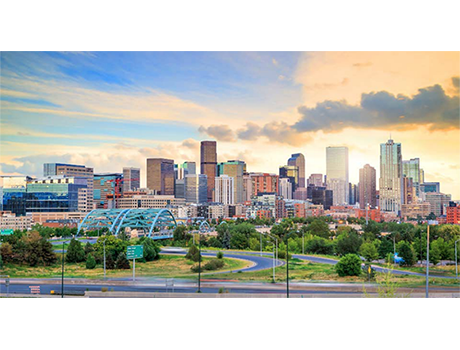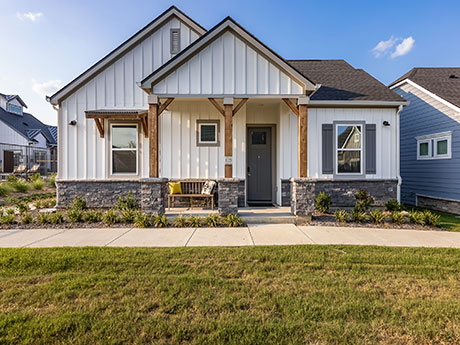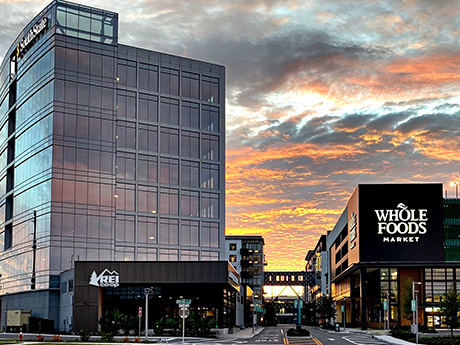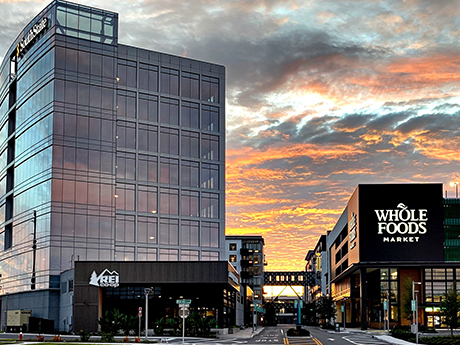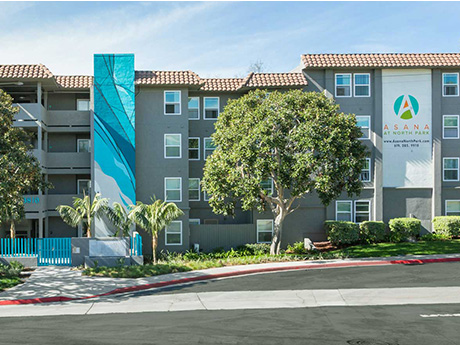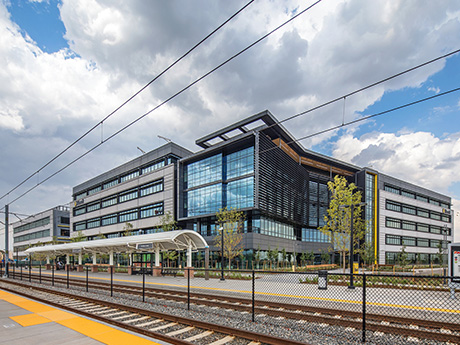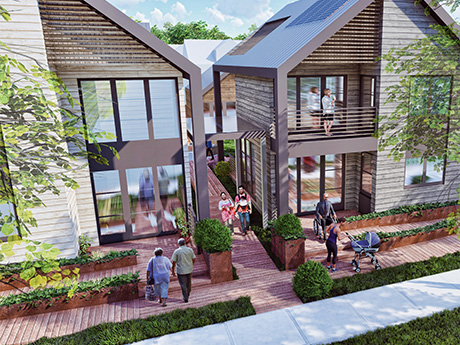Rising interest rates, inflation and general economic uncertainty altered the patterns and outlooks for the industrial, office, retail and multifamily sectors across the United States. As Lee & Associates’ recent Q2 2022 North America Market Report reveals, certain sectors like industrial and multifamily, that were white hot last year, have begun to cool slightly. Meanwhile, retail is making historic gains in the face of decreasing interest in ecommerce. The full Lee & Associates report is available (with further breakdowns of factors like vacancy rates, market rents, inventory square footage and cap rates by city) here. The analysis below provides an overview of four major commercial real estate sectors alongside economic factors impacting each. Industrial Overview: Record Low Supply, Rent Growth Demand for industrial space eased slightly from its record-setting growth of last year but remained strong through for the first half of 2022 as annualized rent growth moved into double digits and the overall vacancy rate fell to 3.9 percent, a record low. Net absorption through June totaled 192.2 million square feet. It was the second highest two-quarter total on record and more than the 170 million square feet of tenant growth for all of 2019. It was exceeded only by 297.8 …
Features
Content PartnerFeaturesIndustrialLeasing ActivityLee & AssociatesLife SciencesMidwestMultifamilyNortheastOfficeRetailSoutheastTexasWestern
Yardi Matrix Report: Institutions Will Own 40 Percent of All Single-Family Rentals by 2030
by Jeff Shaw
SANTA BARBARA, CALIF. — Institutional capital investment in single-family-rental (SFR) acquisitions and build-to-rent (BTR) projects is growing by leaps and bounds. Institutions funded $2.5 billion in SFR acquisitions in 2021 and committed more than $60 billion in capital to buying single-family rental homes over the past year, according to Yardi Matrix’s new report, “Build-to-Rent Fuels Growth in Institutional Single-Family Rental Market.” By 2030, Institutions are expected to own about 7.6 million homes, accounting for almost half (40 percent) of all single-family-rental units in the country. “The institutions that are getting involved in SFRs tend to be private equity funds,” says Paul Fiorilla, director of U.S. research at Yardi Matrix. “There are some traditional core investors that are getting into it, but it’s still looked at as a niche, high-yield sector.” According to Yardi Matrix, mom-and-pop owners still make up most single-family rentals, but institutions are increasing market share, with a heavy concentration in the Sun Belt. According to the National Association of Realtors, Texas (28 percent) topped the list of states with institutional buyers, followed by Georgia (19 percent), Oklahoma and Alabama (18 percent), and Mississippi (17 percent). However, with bulk and one-off home purchases becoming less attractive as options due …
By Nicholas Haines, CEO, Bromley Cos. The desire to live close to everyday retail destinations — grocery stores, restaurants, gyms — isn’t new. But demand for this type of amenity has become increasingly popular with the rise of mixed-use developments. Think about when you go on vacation. You pick a hotel or rental property that’s close to activities you want to do, sights you want to see or places you want to eat. Now, people are beginning to crave that same convenience in everyday life — and it makes sense. While the pandemic blurred the lines between living, working and playing, rental communities that include residential, office and retail space have more than doubled in demand throughout the United States just over the past decade. These units, also known as live-work-play (LWP) apartments, have seen a substantial increase in interest, especially among millennials. Walkability is one of the primary traits that millennials seek when they’re searching for residential options, and LWP apartments present a unique opportunity to blend accessibility with desirable living experiences, world-class amenities, communal green spaces and exciting restaurant, retail and entertainment options. LWP apartments have proven to be a worthy investment, but just like with any other …
By Nicholas Haines, CEO, Bromley Cos. The desire to live close to everyday retail destinations — grocery stores, restaurants, gyms — isn’t new. But demand for this type of amenity has become increasingly popular with the rise of mixed-use developments. Think about when you go on vacation. You pick a hotel or rental property that’s close to activities you want to do, sights you want to see or places you want to eat. Now, people are beginning to crave that same convenience in everyday life — and it makes sense. While the pandemic blurred the lines between living, working and playing, rental communities that include residential, office and retail space have more than doubled in demand throughout the United States over the past decade. These units, also known as live-work-play (LWP) apartments, have seen a substantial increase in interest, especially among millennials. Walkability is one of the primary traits that millennials seek when they’re searching for residential options, and LWP apartments present a unique opportunity to blend accessibility with desirable living experiences, world-class amenities, communal green spaces and exciting restaurant, retail and entertainment options. LWP apartments have proven to be worthy investments, but just like with any other development, there …
By Sarah Yaussi, vice president of business strategy, National Multifamily Housing Council What do renters want now? You might think that the latest and greatest tech upgrades would be at the top of their wish lists, or that fancy fixtures and finishes would be a powerful differentiator when choosing among their rental options. In reality, however, the most valued apartment features and community amenities for the 250,000 or so renters surveyed in the 2022 NMHC/Grace Hill Renter Preferences Survey Report were, in large part, far simpler. Those amenities and services that allowed them to simplify their to-do lists and take care of their families and their own health clocked in at the top of our list. About the Survey NMHC/Grace Hill survey respondents were asked about their levels of interest in a battery of apartment features and community amenities. Features are those design aspects contained within the unit or home itself. Amenities, on the other hand, are shared by residents of the community and most often refer to a rental community’s common areas. If respondents expressed interest, they were then asked how much more they would be willing to pay per month for an identical rental home that had that …
Proptech Improves Employee, Asset Performance While Giving Residents the Autonomy They Demand
by Jeff Shaw
By Stacey Darden, senior director of innovation and compliance, New Standard Equities In the multifamily industry, we rely on technology to increase productivity and to help us make strategic decisions. Technology allows information and data from various sources to be collected and organized in a way that is easy to understand. Rather than looking at different reports to form an educated decision, technology can help synthesize data into predictive analytics based on historical activity and current trends. Previously, decision makers, such as asset managers or investors, would review various reports only using one piece of information to try and compare findings across portfolios or regions. The old-fashioned approach might include reviewing a box score report or resident activity detail to understand property operations for a given period. Or it may have involved reviewing a variance report to understand the financial activity for a given period. An asset manager would then try to discover any correlation between the two sets of reporting. Technology can help display all given metrics in a digestible manner to easily identify if any patterns or relationships exist. Selecting a technology provider who will partner with clients and help customize reporting based on the client’s needs will …
By Michael Brumley, Project Executive, Kiewit Building Group AT The pandemic sent ripple effects throughout the construction industry. Along the way, it also heavily influenced and impacted the way employees in the workforce now operate and interact. With COVID prompting a shift in remote work, many are wondering if it’s beneficial to go back to the office full-time, adopt a hybrid approach or forgo investing in office space altogether. There are many justifications for investing in office space when you consider variables like productivity, industry-specific jobs or trades, and overall employee satisfaction and benefits. The distinction is you need to invest in spaces that are successful for employers and employees alike. It’s All About the Benefits The pandemic proved work can be done anywhere as long as Wi-Fi is available. So, how can companies entice employees to work at an office once the investments have been poured into developing the physical space? According to a survey from McKinsey on consumer interest and purchasing power, 79 percent of respondents said they believe wellness is important while 42 percent consider it a top priority. Consumers in each market studied reported a substantial increase in the prioritization of wellness over the past two to three …
By Carol Cole, director of interior design, DAHLIN Group Architecture AT Intergenerational households are growing at a faster pace than they were pre-pandemic. Generations United, a nonprofit dedicated to supporting intergenerational programs and policies, estimates that 66.7 million U.S. adults live in a multigenerational household, with nearly 57 percent of this statistic spurred by COVID. Even after the immediate impacts of the pandemic subside, intergenerational living will remain prevalent for a variety of reasons. These can range from the need for child and/or elder care to cultural expectations and economic-related factors, such as loss of a job, high educational expenses or housing availability. Considering this trend and recognizing that more than 16 million Americans are currently over the age of 65, the movement toward incorporating universal design strategies on residential projects is key for creating aesthetic living spaces that are usable by everyone to the greatest extent possible. Already a standard in the healthcare community, universal design is the design and composition of a space set up to meet the needs of all users, not as a special requirement to benefit only a small fraction of a population. The practice results in inclusive environments that support high-functioning, independent living for …
It’s a challenging world right now. Inflation, rising interest rates, persistent supply chain lags and labor shortages are affecting the retail industry. That’s to say nothing of the always changing retail environment. But there are also consumers who are ready to put COVID behind them — who are looking for a reason to venture out, be entertained and spend some money (though maybe not as much money, thanks to inflation). You also have shopping center owners who are quite eager to give these consumers what they want. While architects and designers can’t remove problems like rates or inflation from an owner’s plate, they can help them navigate — and win — in this new market. How? By making sure every detail, dollar and person counts. Multifaceted Designers Strength in numbers is always appreciated when times are tricky. Frankie Campione, principal at CREATE Architecture Planning & Design in New York City, notes designers are collaborating more than ever to get the job done. This type of collaboration is particularly useful during the current materials shortage, he notes. “There doesn’t seem to be any way to know what shortage may affect any particular project,” Campione says. “There are two projects, both on Long …
Developers have seen permitting and entitlement timelines lengthen exponentially over the past few years. What is causing increased timelines and how do developers overcome challenges and avoid unnecessary delays? If expanded timelines are inevitable in some cases, how can developers ensure that slowdowns do not spread to other aspects of development? Many municipalities have been overwhelmed by an explosion in projects and applications in the development queue, and the issues are compounded by employee turnover within these organizations. Municipal slowdowns in upgrading utility capacities have further stalled the process of development. Additionally, the process for obtaining permits and entitlements has grown increasingly complex in certain regions, regardless of property type. REBusiness Online spoke with experts at Bohler, a land development design and consulting firm, to learn the best practices for keeping delays and budgets under control in the face of growing timeline uncertainties. To avoid problems before they begin, these experts recommend early due diligence and local expertise, as well as an approach that incorporates the community, local agencies and the authority having jurisdiction at crucial points. Bohler’s team also emphasizes the importance of working through waiting periods and working on different elements of a project concurrently, so that if …


